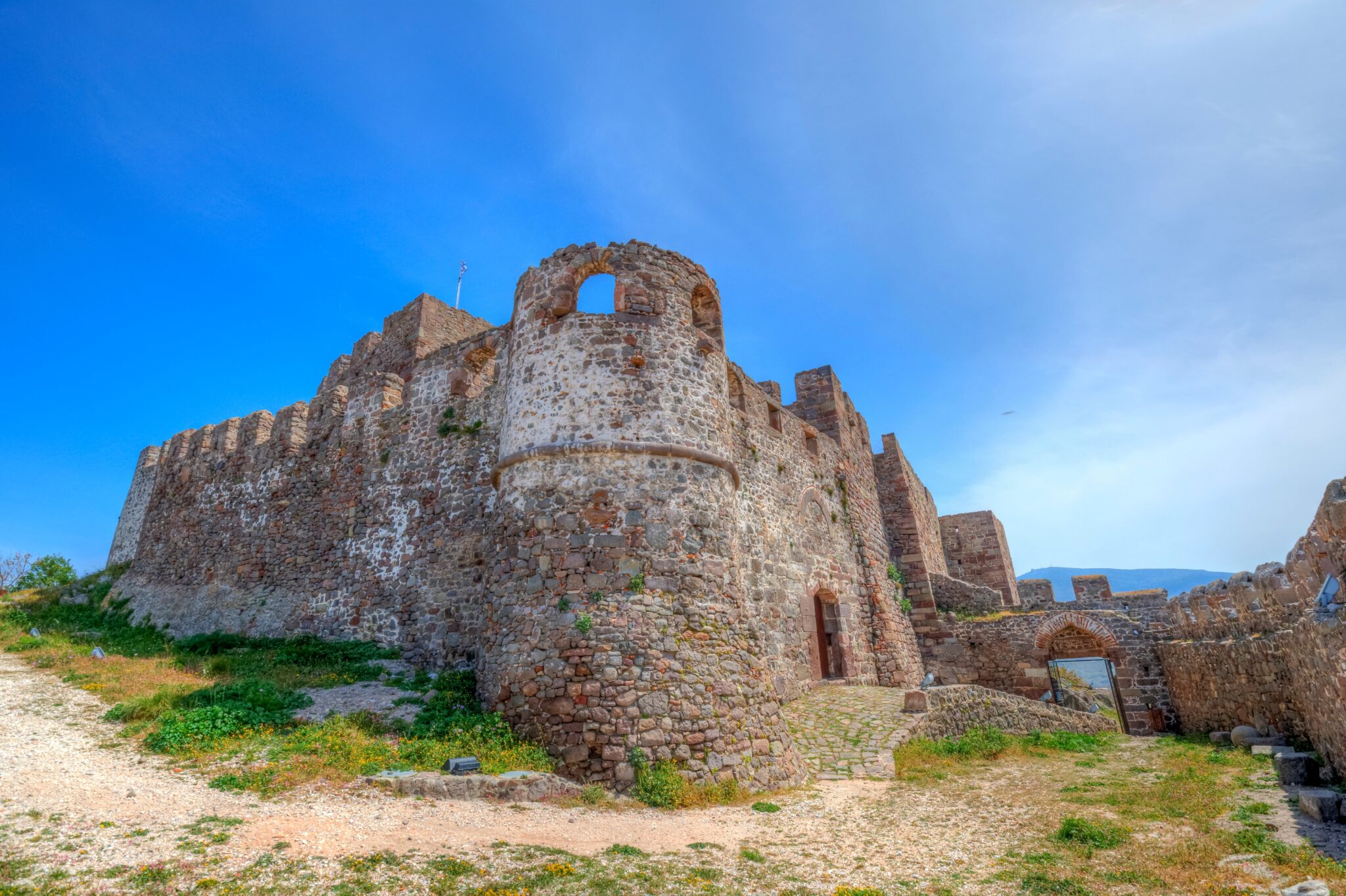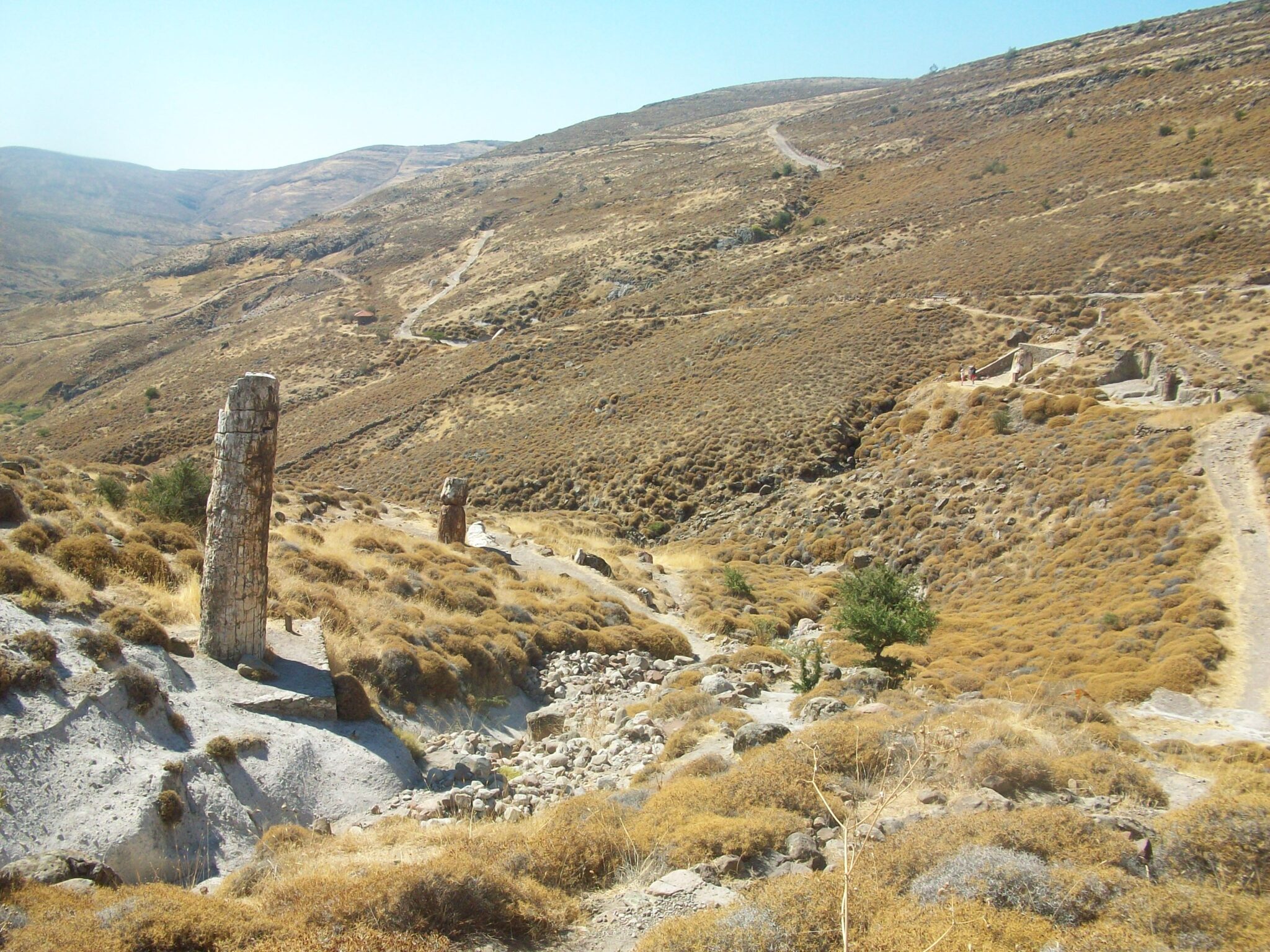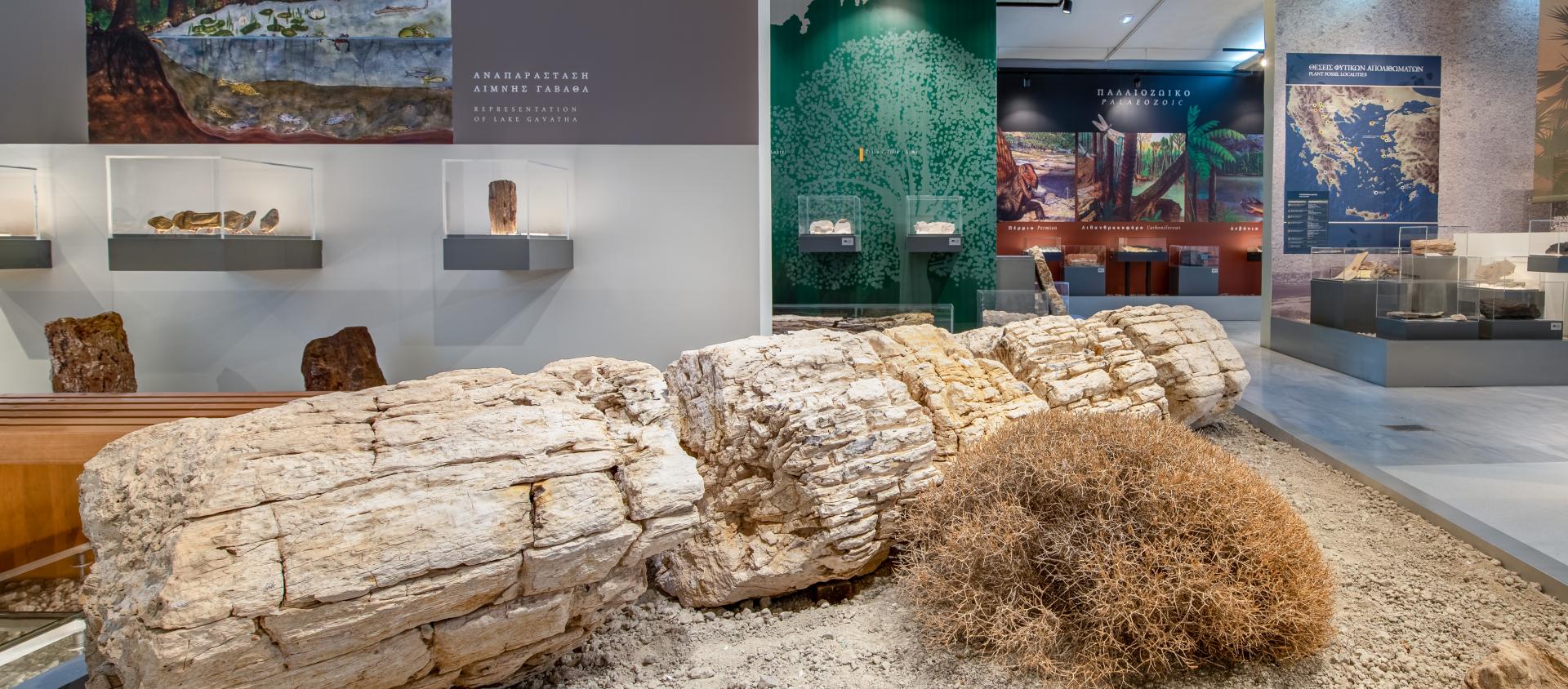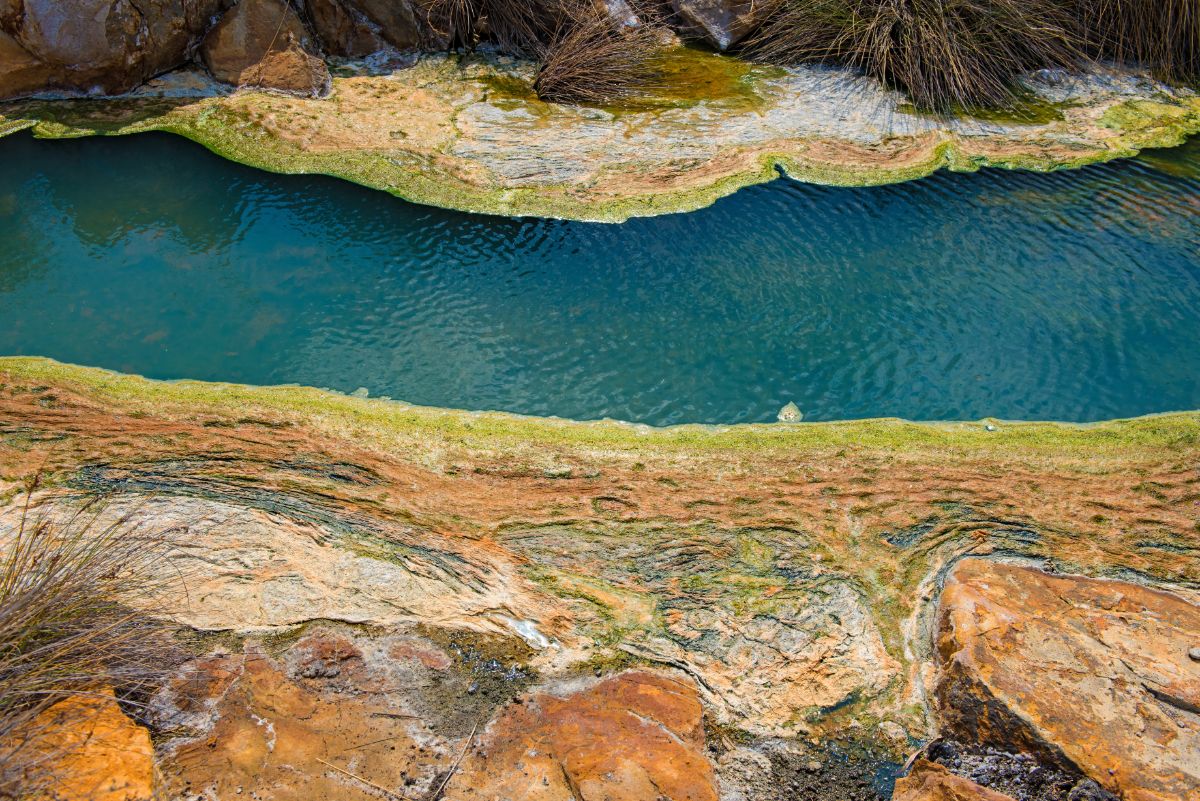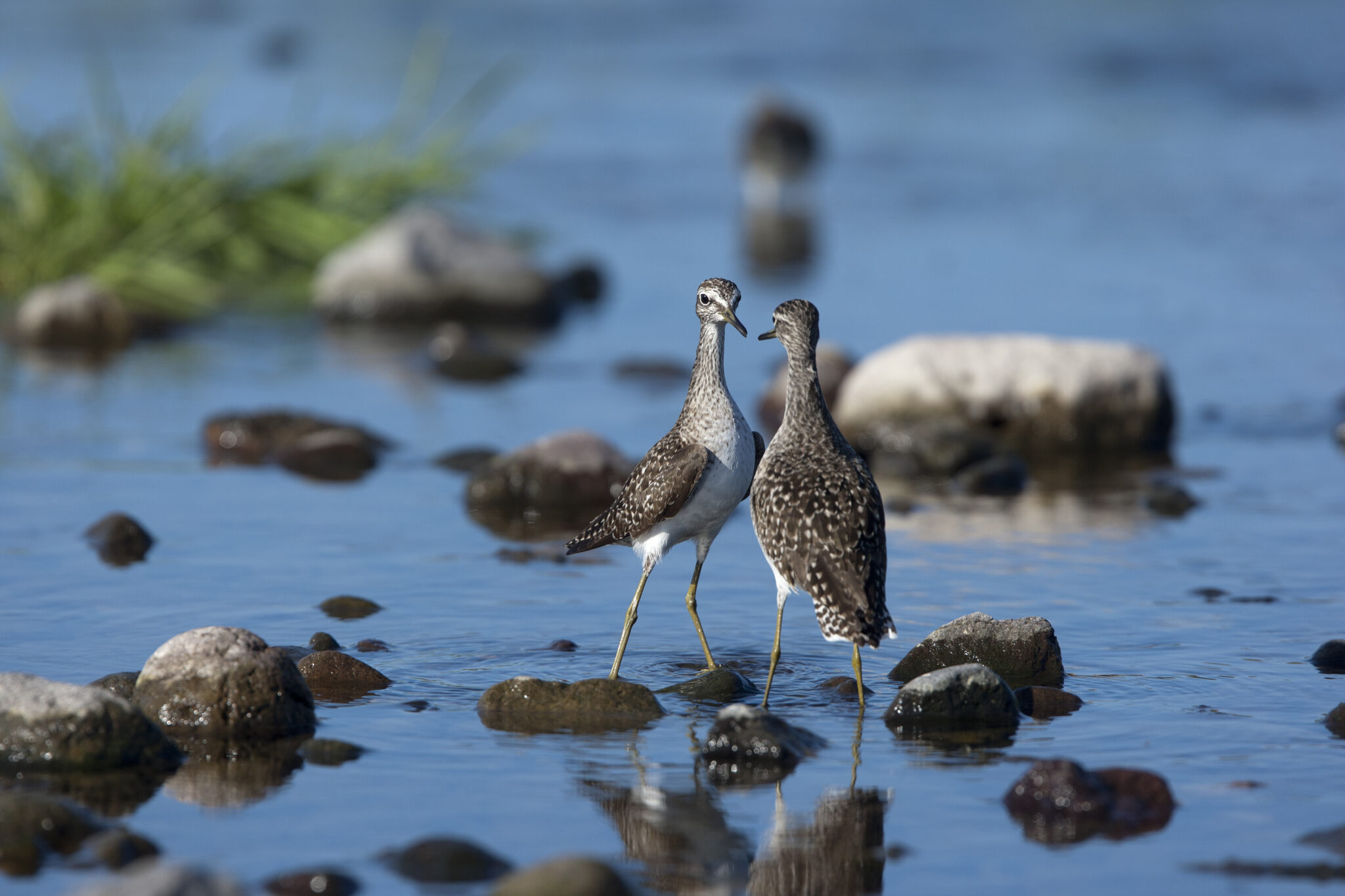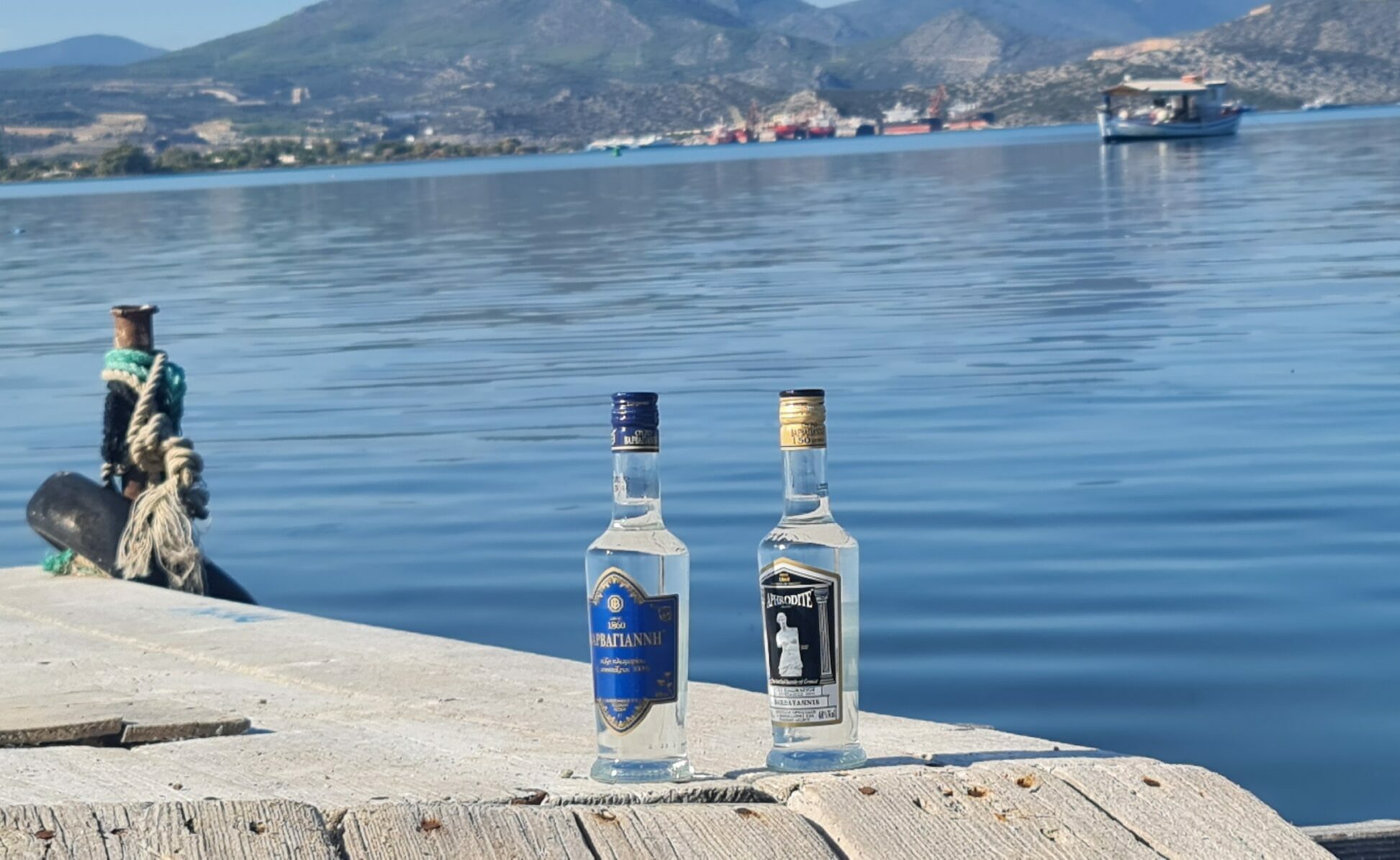Embark on an unforgettable journey to Lesvos, a Greek island blessed with an abundance of nature, history, and culture. This guide invites you to witness breathtaking views from Molyvos’ Castle, explore a Petrified Forest dating back millions of years, and soak in ancient thermal springs. Discover the diverse bird species, embrace the island’s rich ouzo tradition, and marvel at well-preserved neoclassical architecture. Whether you’re a history enthusiast, a nature lover, or an explorer at heart, Lesvos promises an adventure filled with enchanting sights, intriguing discoveries, and culinary delights, painting a vivid picture of this amazing North Aegean island.
Delight in a View from the Top of Molyvos’ Castle
The most well-known landmark in Molyvos, the castle was built during the Gattelusi period, around the mid-14th century, and took on its present form during Ottoman rule. However, the historical details are not what will captivate you here. The view from the castle is simply unparalleled, with the red rooftops contrasting against the blue Aegean Sea and the colours of the olive trees. It’s worth visiting just before sunset to enjoy the breathtaking spectacle.
Lesvos is an island famous for its beautiful mansions and neoclassical homes, and as you descend from the castle, you’ll quickly come across one of the finest examples. The Komnenaki-Kralli Mansion, which now serves as an annexe of the Higher School of Fine Arts, is a characteristic example of 19th-century local architecture. The three-storey building features a stone-built ground floor, while the top floor is adorned with wall paintings by folk artists of the time depicting scenes from everyday life.
Explore the Petrified Forest
In western Lesvos, where lava and volcanic ash meet the deep blue Aegean Sea, time and the waves slowly reveal fossilised tree remnants that lived millions of years ago. Large and small fossilised trees, in a myriad of colours, numbers and variety, stand erect or lay scattered on the ground, their roots and branches entwining mysteriously.
You can visit the Petrified Forest Park in the “Sigri Petrified Forest” zone, or explore hiking trails that connect various fossil-rich locations. A network of trails, much of which is wheelchair accessible, allows you to traipse through history. One of the most striking exhibits is a massive sequoia, at 7.20 metres high and 8.5 metres in circumference. In life, this tree reached a height of 90 metres and provides invaluable information about the life of its era and how climate change has affected the environment over the millennia. These are found within the park, but now there are equally significant findings on the new Kalloni-Sigri road. While here, also make sure to also visit the Fossil Museum.
Also well worth visiting is the Museum of Natural History, which hosts the permanent exhibition “Petrified Forest”. It showcases fossilised trunks, branches, fruits, and leaves from a variety of coniferous and angiosperm trees, along with fossilised bones of animals that lived during the Lower Miocene epoch, approximately 20 million years ago. The museum also organises temporary exhibitions, such as that of the Liotia alligator, which lived in northwestern Lesvos around 19 million years ago in a dense subtropical forest.
Ancient Healing at the Hot Springs
Lesvos has numerous locations where you can enjoy the curative powers of thermal springs, used on the island since antiquity. These are Eftalou, Polycghnitou, Panayia I Krifti, Lisvori and Skala Thermi. Worth visiting not only for their healing benefits but also as a chance to see the areas that surround them, these springs often combine organised facilities with natural spots. There are also several spa hotels on the islands that make the most of these beneficial waters. Find out more about Lesvos’ hot springs.
Birdwatching
Lesvos is among the most significant birdwatching locations. Boasting a diverse landscape, it lies at the border between Asia and Europe and hosts an impressive array of both permanent and seasonal wetlands – over 50 in total. This grants it the advantage of accommodating numerous and varied bird species, in fact, over 300 different types. What can you expect to see? Small owls, hoopoes, reed buntings, goldfinches, wheatears, kestrels, swifts, Cetti’s warblers, bee-eaters, black storks, garganeys, blue rock thrushes, rock partridges, Bonelli’s eagles, ortolan buntings, lesser spotted eagles, pine buntings, and the striking flamingos as they dive to find food or gently rest their graceful necks on their pink feathers to sleep.
A magnet for alternative tourism, the Gulf of Kalloni is internationally renowned as a birdwatching destination. The entire marine area enclosed by the gulf constitutes an ecosystem of utmost importance for avian life. The most significant region for bird observation is undeniably Alyki of Agia Paraskevi, where the Municipality of Agia Paraskevi has set up a dedicated observatory. Visitors flock to Lesbos, preferably in the springtime (from mid-April until late May), to witness the vernal migration of birds from Africa, where they have spent the winter, towards Europe.
Each year, the area is teeming with wild geese, mallards, swans, herons, kingfishers, bee-eaters, avocets, pelicans, gulls, terns, diving ducks, water rails, and striking pink flamingos, which stand out and are considered the most beautiful and imposing “visitors” of the wetland. (www.lesvosbirds.gr)
Discover the Island’s Ouzo Tradition
The Isidoros Arvanitis World of Ouzo Museum, situated near Plomari village, offers insights into the production of a popular Greek ouzo brand. Operational since 1894, this distillery, found within a beautiful olive grove near Agios Isidoros beach, presents its extensive ouzo-making tradition through an engaging museum. Visitors (the museum is open from Tuesday to Saturday, 10:00-13:00) can learn about the history of ouzo, observe the production stages, and view historical distillery machinery. The production of Ouzo Isidoros Arvanitis involves aniseed that’s grown on the distillery’s estates, local Sedountas river water, and various Greek seeds. This entirely distilled spirit is exported to over 30 countries.
The Barbayannis Ouzo Museum presents the rich history of Ouzo. Efstathios J. Barbayannis, known for his distillation expertise, introduced ouzo in the early 19th century. For over 140 years, the Barbayannis family has refined the secret recipe across five generations, while maintaining traditional distillation methods and ingredients. Located beside the active distillery, the museum allows visitors to explore the Barbayannis family’s ouzo-production journey. It displays original equipment used for bottling and labelling Ouzo Barbayanni Blue and hosts the inaugural alembic from Constantinople, used for refining secret formulas. Ouzo Barbayanni remains a symbol of high-quality products across Greece today.
Take a Stroll in Vatousa
The village’s name is derived from the humble word “vatos”, meaning shrub, but it’s a gem of a village nestled in greenery, mysteriously not ranked among the top suggestions in tourist guides. As if hypnotised, we let the winding paths lead us to the Mansion of Gogos, a renowned 19th-century doctor, now functioning as a folklore museum, and the island’s landmark church, the Dormition of the Virgin Mary. Sneak a peek through stone fences into the courtyards of the houses, their rich floral scents being the only giveaway of their interiors. Upon arriving at the lush square with the plane tree, notice how you are treading on a path of lava, in the midst of a colossal volcanic crater.
Get a Taste of the Old Town’s Ottoman Past
The Geni Mosque and the Tsarsi Hammam show us that this was a focal point of the Ottoman period. Wander through the narrow streets of Bas Fanar and Koumidia to taste ouzo, bougatsa and freshly baked bread and observe the preparations at the greengrocers, fine butcher shops and cheese stores.
A stop at the Kainari spice shop is worth your time, and don’t forget to seek out the local Mytilene pastourma and local sausages with a unique taste, as well as traditional sheep’s yoghurt.
Read also:
Beyond the Ouzeris: Bars and Beach Bars of Lesvos



